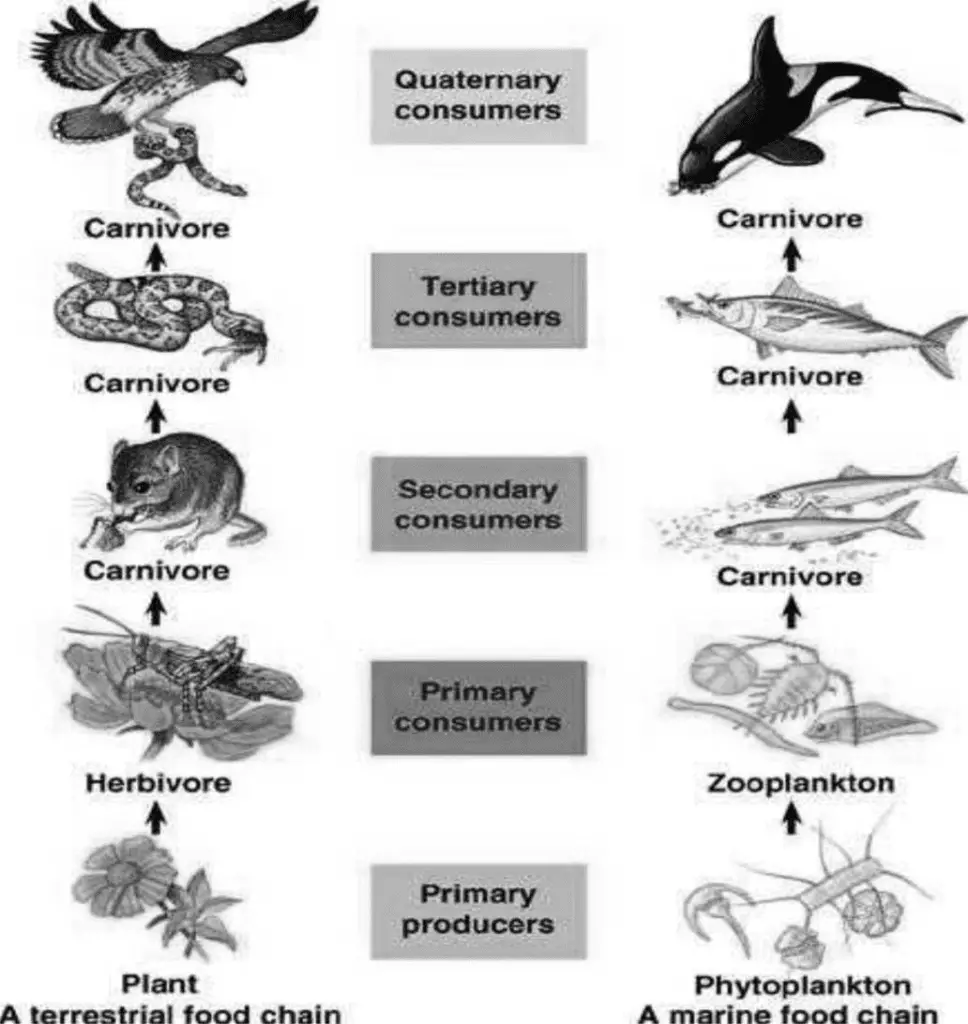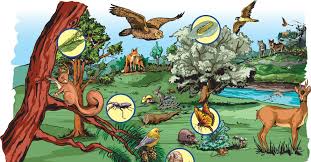A Food Chain
The transfer of food from the plants (producers) through a series of organisms with repeated eating and being eaten is called a food chain. It shows the relationships between producers, consumers, and decomposers.
All living organisms (plants and animals) must eat some type of food for survival. Plants make their own food through a process called photosynthesis.
Using the energy from the sun, water and carbon dioxide from the atmosphere and nutrients, they chemically make their own food. Since they make or produce their own food they are called producers.
Organisms which do not create their own food must eat either plants or animals. They are called consumers. Some animals get their energy from eating plants while other animals get energy indirectly from plants by eating other animals that already ate the plants.
Animals that eat only plants are called herbivores. Animals that eat both plants and other animals are called omnivores. Animals that eat only other animals are called carnivores. Some animals eat only dead or decaying materials and are called decomposers.

Food Web
A food web is made up of interconnected food chains. Most communities include various populations of producer organisms which are eaten by any number of consumer populations. The green crab, for example, is a consumer as well as a decomposer.
The crab will eat dead things or living things if it can catch them. A secondary consumer may also eat any number of primary consumers or producers. This non-linear set of interactions which shows the complex flow of energy in nature.
Read Also : Energy Loss in Food Chain and Food Web
In the marine food web, special producers are found. They are tiny microscopic plants called phytoplankton. Since the water is the home for these special tiny plants; it is also the home for tiny microscopic animals called zooplankton.
And of course, zooplankton eat phytoplankton. Sometimes zooplankton and phytoplankton are collectively referred to as plankton. In a food web nutrients are recycled in the end by decomposers.
Animals like shrimp and crabs can break the materials down to detritus. Then bacteria reduce the detritus to nutrients. Decomposers work at every level, setting free nutrients that form an essential part of the total food web.

In summary, in a food chain, energy is lost in each step of the chain in two forms: first by the organism producing heat and doing work, and second, by the food that is not completely digested or absorbed. At the end of the unit you will be able to know the full meaning of the term Food chain, food web and how energy is lost in both food chain and food web.

